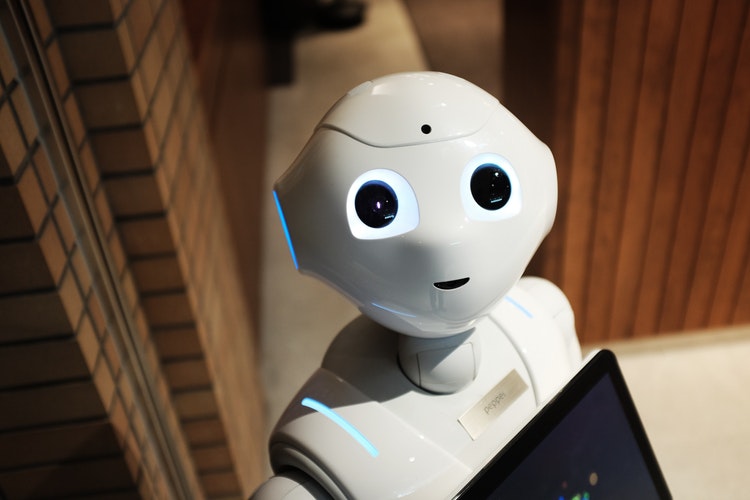Historically, we’ve come a long way since the introduction of “robotics” as a term coined by Isaac Asimov, in addition to his Laws of Robotics. Artificial intelligence is present in every facet of our daily lives, from AI-driven personal assistants such as Siri to global search engine algorithms like Google. The field in which we are still wary of introducing robotics lies in education.
From K-12 to academia, students have grown accustomed to AI tools outside the classroom, however. Should the barrier between robotics and education be eliminated as we move further into 2020? According to Forbes, teachers spend up to 50% of their time on non-teaching tasks that revolve around student management, grading, data analysis and curriculum design.
However, it is expected that up to 47% of learning management tools will be AI-enabled by 2024 with estimated market size of $6 billion.
Such a push toward robotics and AI innovation in education continues to make the process more and more available to teachers willing to advance forward. But, how does robotics improve school education beyond what it can currently offer to young minds? Also, how do we justify the ethical question of introducing digital technologies to K-12 students at an early stage of development?
Students and AI – The Ethical Dilemma
The biggest concern most parents and educators have in regards to robotics and AI in education lies in the ethical dilemma of digital technology adoption. How soon is “too soon” when it comes to presenting a K-12 student with an AI-based system in formal education? As we’ve stated previously, AI already permeates every facet of our life, whether we browse YouTube via its algorithms or look for online shopping deals. Enabling our children to understand these technologies at an early stage will effectively give them the tools to prepare for the future we’re headed towards.
Introducing a systematic, graduate way of utilizing robotics in a school environment with direct supervision from a tech-savvy teacher really is a necessary step forward. Failing to explain the role of AI to children in a controlled environment risks their unfamiliarity and lack of know-how for the job market of tomorrow. Instead of asking “what can go wrong”, we should take a utopian stance and ask “what can go right” with robotics in classrooms going forward. That being said, what are some of the concrete benefits and improvements brought on by using robotics at school?
“How soon is “too soon” when it comes to presenting a K-12 student with an AI-based system in formal education?”
Inclusive, Per-Student Learning Pace
What separates children from AI lies in their uniqueness as every person is different in their own way. However, this can pose a problem for educators who are often tasked with managing dozens of students at once in equal capacity. Robotics in education can alleviate much of that difficulty by handling tasks that revolve around mechanical and empiric calculations, analysis and extrapolation.
Teachers of tomorrow are practically handicapped without AI. Given that students often rely on AI without even realizing it during their time with PCs and smartphones, the same expectations translate to their classrooms. Thus, the world in which we find ourselves in practically demands from teachers to adapt curriculums on a per-student basis through smart use of robotics.
Early Technological Literacy
Speaking of K-12 students, their exposure to tablets, smartphones and PCs in household conditions doesn’t necessarily translate to technological literacy. Accessing a game or a YouTube video doesn’t constitute as online browsing via voice commands or using AR to solve logic-based puzzles.
This is why introducing robotics at an early stage of development, in controlled intervals, can have drastically positive outcomes in terms of tech literacy. Students who are enabled to use technology will have better odds of developing skills in IT and the aforementioned robotics due to positive early influence.
“If applied correctly, robotics can act as a tool to break down prejudice and conflict barriers in classrooms and enable all students to develop equally.”
Emphasis on Creative Problem Solving
One of the main reasons to advocate for robotics in education is to enable children to think differently than before. Specifically, by allowing students to interact with AI-based platforms that challenge their perception and senses, creative thinking can develop more freely than ever before.
Robotics can enable educators to create product-based exercises that revolve around creation, prototyping, problem solving and presentation of said products under their watchful guidance. Such an approach to robotics in education would teach children to embrace technology as part of their everyday life. For better or worse, the reality is that we already live in a tech-dependent world – let’s teach children to use it in a positive manner.
“Failing to explain the role of AI to children in a controlled environment risks their unfamiliarity and lack of know-how for the job market of tomorrow.”
Teamwork & Leadership Enablement
There is no barrier for entry when it comes to robotics in education from the students’ standpoint. Rivalries, disagreements and conflict can be avoided if AI-based platforms are used to promote teamwork and collective thinking in the classroom.
Educators can utilize robotics to create team-based tasks and projects which involve multiple distinct aspects, requiring students to pitch in to contribute to the group. Given the nature of robotics, boys can work with girls, children with autism can work with hearing or sight impaired classmates, and so on. If applied correctly, robotics can act as a tool to break down prejudice and conflict barriers in classrooms and enable all students to develop equally.
Tomorrow is Today (Conclusion)
With benefits such as interactive learning, curriculum flexibility and early life skills development, the notion of utilizing robotics in education should be a no brainer. It is essential that we discuss the topic in the present tense, however, as the technology to achieve the aforementioned improvements is already here.
The discussion isn’t about whether to delegate young minds to AI and call it a day – just the opposite in fact. Professional educators with moral values can use robotics in education to promote prosperity and development with tech as just another tool in their arsenal. Thus, the value of AI for K-12 and academic students alike is unprecedented and should be considered as a next leap forward in educational reform.
—Marques Coleman is a blog writer at TrustMyPaper and editor at GrabMyEssay










